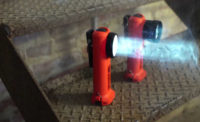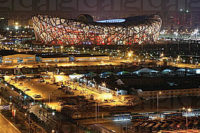Fabricating and testing optical components is a very detailed process. It begins by grinding a spherical glass blank using ring tools to create a semifinished lens. Next, the lens’ rough surface is rotated and rubbed against a tool having the desired surface shape.
Finally, a mixture of abrasives and fluid are placed between the lens and tool to polish the lens. Testing verifies that the lens’ final shape meets tolerances.
For more than 25 years, Swiss-based Satisloh AG has provided equipment, software, tools and consultation services to manufacturers of ophthalmic and precision optics lenses. These customers use Satisloh’s equipment for lens surfacing, coating and finishing. One of the company’s most innovative machines is the Nucleo-Blocker, which uses an oval plastic block piece to keep an optical lens secure through all manufacturing steps, including coating and edging. Keeping the lens secure increases manufacturing efficiency.
During production, a tray of semifinished lenses are fed into the machine. After this, the machine automatically removes one lens to determine its type and position. Next, the machine probes the lens front to determine its exact curve geometry and check for errors. The machine then chooses the best-fitting block piece for the lens out of a container. The block piece is retrieved, and its curved top surface (pretreated with a thin adhesive) is accurately positioned onto the lens front.
A UV LED lamp, made by Phoseon Technology, cures the adhesive within seconds, securely bonding the lens and block piece. The machine places each blocked lens back into the original tray at a rate of up to 100 pieces per hour.
The block piece and adhesive protect the lens’ front surface and eliminate the need to tape down the lens during production. Equally beneficial, the block piece can be machined while offering full surface support to the lens. This increases the accuracy of the direct surfacing treatments on lenses with complex designs or oval shapes.
Satisloh cures the adhesive with LEDs because they induce no residual heat into the lens and ensure high throughputs. The curing technology also offers controlled process repeatability and operator safety.
The Nucleo-Blocker can be paired with an automated Nucleo-Deblocker, which separates the lens from the block piece before cleaning the lens. Up to 200 lenses per hour can be deblocked. A manual unit uses water jetting to separate the lens from the block piece at a rate of 100 lenses per hour.
The Nucleo-Blocker’s normal working range is from plain to 15 dioptre (dpt) base curve. Its extended working range is from a -10 dpt to a 25 dpt base curve. The machine processes lenses that are 55 to 85 millimeters in diameter and up to 30 millimeters thick.
Phoseon’s FireFly UV LED lamp is for small and spot curing. It has a peak intensity of 8 watts per cubic centimeter. Its emitting window ranges from 25 by 10 millimeters, to 125 by 20 millimeters.
For more information on UV LED curing, call 502-439-6446 or visit www.phoseon.com.




